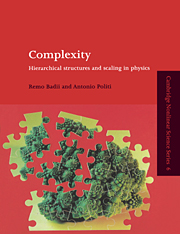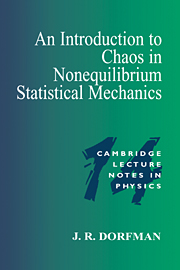Complexity
This is a comprehensive discussion of complexity as it arises in physical, chemical, and biological systems, as well as in mathematical models of nature. Common features of these apparently unrelated fields are emphasised and incorporated into a uniform mathematical description, with the support of a large number of detailed examples and illustrations. The quantitative study of complexity is a rapidly developing subject with special impact in the fields of physics, mathematics, information science, and biology. Because of the variety of the approaches, no comprehensive discussion has previously been attempted. This book will be of interest to graduate students and researchers in physics (nonlinear dynamics, fluid dynamics, solid-state, cellular automata, stochastic processes, statistical mechanics and thermodynamics), mathematics (dynamical systems, ergodic and probability theory), information and computer science (coding, information theory and algorithmic complexity), electrical engineering and theoretical biology.
- Mathematical tools presented in uniform, self-consistent way
- Rich collection of pictures and fully worked-out examples, many of which contain new analytical or numerical results
- Physical investigation of formal languages and automata presented for the first time
Reviews & endorsements
‘… for a mathematically mature reader determined to ponder what complexity might mean, this book will provide some rewarding exercise.’ Steven H. Strogatz, Nature
‘This is a book for professional scientists, but it is by no means solely for specialists: its admirable breadth of outlook should provide something for every scientist.’ Peter Bradshaw, The Times Higher Education Supplement
Product details
August 1999Paperback
9780521663854
336 pages
247 × 175 × 17 mm
0.665kg
56 line figures 5 halftones 1 table
Available
Table of Contents
- Part I. Phenomenology and Models:
- 1. Introduction
- 2. Examples of complex behaviour
- 3. Mathematical models
- Part II:
- 4. Symbolic representations of physical systems
- 5. Probability, ergodic theory, and information
- 6. Thermodynamic formalism
- Part III. Formal Characterization of Complexity:
- 7. Physical and computational analysis of symbolic signals
- 8. Algorithmic and grammatical complexities
- 9. Hierarchical scaling complexities
- 10. Summary and perspectives.





